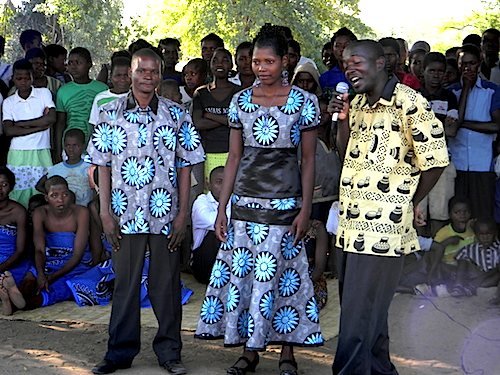George Akerlof’s seminal 1970 paper, “The Market for Lemons,” explored the idea of adverse selection in the used car market. While sellers know the quality of their cars, buyers struggle to distinguish good from bad. This information asymmetry suppresses the demand for good cars and potentially forces the good cars out of the market. Adverse selection is a mainstay of the economics curriculum and is a central concern for products like insurance.
In courtship, people also make choices under asymmetric information. They often know more about their own traits than they reveal to their partners. As in the used car market, “high-quality” marriage market participants may postpone commitment until they are sure they’ve found a good match. This cycle reinforces itself by increasing the share of “low-quality” people on the market today, which is adverse selection.
In Sub-Saharan Africa, HIV risk is an essential partner trait that is difficult to observe. HIV remains asymptomatic for several years after infection, and without an HIV test, people may not be fully confident of their partner’s status. Someone may also worry more generally about a partner’s inclination to engage in risky behavior that could lead to HIV in the future.
Frequent HIV testing could overcome this concern and reassure partners that they are safe. Although recent donor initiatives have increased access to HIV health care services, HIV testing remains inconvenient and stigmatized in many places. Ethnographers Jackson Mukiza-Gapare and James Ntozi comment that the fear of HIV has “poured cold water on the institution of marriage.” Indeed, demographic data show a strong correlation between HIV prevalence and marriage timing in Sub-Saharan Africa, both cross-sectionally and over time.
I study the impact of HIV on the marriage market in a new working paper with Manuela Angelucci and Jenny Trinitapoli. 1505 young women (aged 15 – 25) from Balaka, Malawi participated in the Tsogolo La Thanzi (TLT) panel study from 2009 to 2011. Surveyors interviewed these women about their relationships (and many other things) and gave them pregnancy tests every four months for three years. They also encouraged the women to invite their partners into the study. After each interview, they offered free HIV tests to a randomized subset of women, as well as their partners. These tests allowed HIV-negative women to signal their status and screen partners by their willingness to be tested.
We find that routine HIV testing substantially accelerated marriage and fertility in this context. For women who were unmarried initially, the intervention increased the marriage rate by 27 percent and the probability of pregnancy by 26 percent within the study period. Consistent with the idea of asymmetric information, routine HIV testing had little effect on own HIV status perceptions, but made perceptions of partner status more precise. The magnitude of the marriage and fertility impacts can explain a large portion of recent marriage and fertility patterns in Malawi.
Our estimates contrast with other HIV testing studies (see here, here, here, and here), which find small and contingent effects of HIV testing on risky sexual behavior, education, marriage and fertility. A distinctive feature of our study is that surveyors offered to test participants repeatedly instead of just once. HIV testing is much more useful for sharing information within partners if it is available on a continuous basis. To help reconcile our findings to the literature, we also examined the impact of receiving a single HIV test in another subset of TLT participants. Here, we found no effect, suggesting that regular availability of HIV testing is important feature of the intervention.
Technological advances have steadily made HIV testing more convenient in recent years. The time required to receive test results has fallen from weeks to days to minutes. Nowadays self-testing kits can provide nearly instantaneous results with maximal privacy. At the same time, the recent proliferation of antiretroviral AIDS treatment has lessened the health impact of an HIV infection. If our story about adverse selection is right, these developments may continue to hasten marriage and childbearing in HIV-endemic settings. Because early marriage has both benefits and drawbacks, the welfare effects of this shift are unclear.
